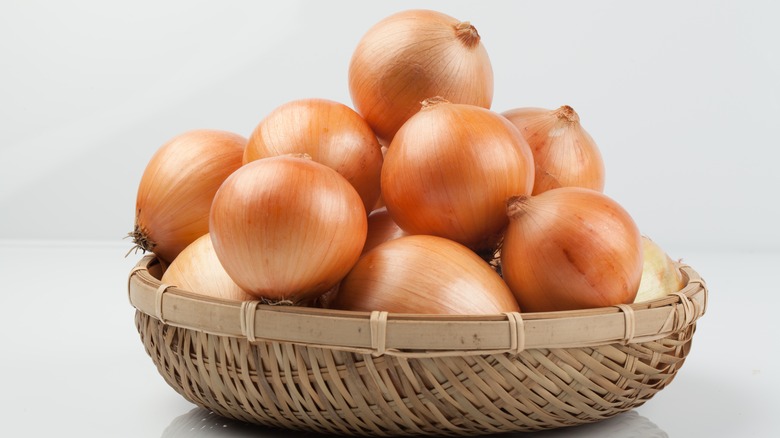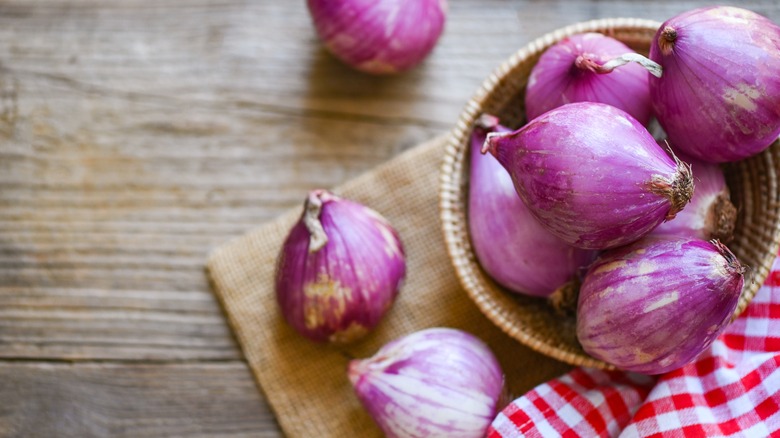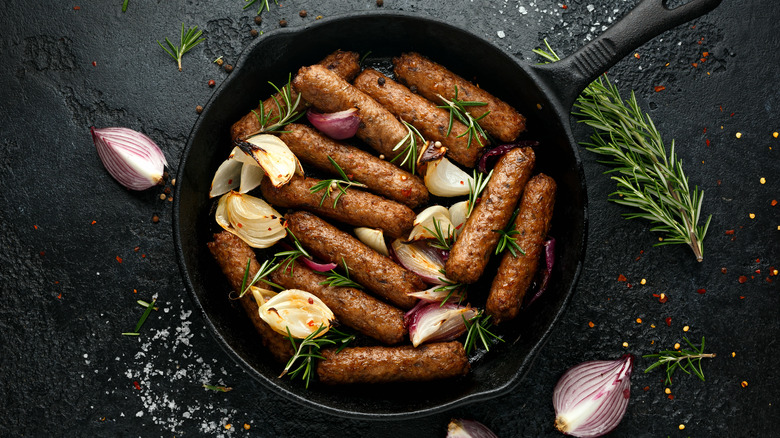Onions Vs. Shallots: What's The Difference?
We may receive a commission on purchases made from links.
Onions are key when it comes to enhancing a number of dishes. This vegetable comes in a variety of flavors, among which range from subtly sweet to strongly spicy. Onions are not only versatile by way of flavor, though: You can eat them in their raw form in dishes like salad, use them as a spice to enhance other foods (especially meats), and even caramelize them to bring out their sweetness. ( To note, caramelized onions provide a wonderful contrast of flavors when it comes to more savory fare, such as Philly cheese steak.)
Though onions are an important vegetable in their own right, they are often confused with their cousin, the shallot. A shallot looks like an onion that's been compressed and elongated, so it's easy to see why people confuse the two. According to MasterClass, the most common type of shallot in the U.S. is the Jersey shallot, which has brown skin and a light purple interior. People often mistake the Jersey shallot for a smaller red onion. However, despite onions and shallots having similar appearances, they have several key differences.
Differences between onions and shallots
According to Southern Living, one basic difference between onions and shallots is the way they grow. While onions grow in individual bulbs, shallots grow in clusters. This actually makes shallots more similar to garlic than onions, as garlic grows in clusters, as well. Additionally, if you've ever broken open a shallot, you may have noticed that its interior divides into cloves, which is another way it resembles garlic, per the Food Network.
A key difference between these two vegetables is their flavor and texture. Shallots are sweeter than onions and generally have a softer texture, Food Network reports. Their differing flavor is why you shouldn't use shallots and onions interchangeably. Knowing when to choose between these two vegetables can definitely elevate your dish to the next level. The softer texture of a shallot allows it to caramelize with more ease than an onion, making it simple to emphasize its sweet flavor.
When to use onions vs. when to use shallots
As mentioned above, knowing when to choose between onions and shallots can take your dish to the next level. So, when should you use onions, and when should you use shallots? Well, the dish you're making plays a large role in your decision. For example, if you're making a salad, it is probably best to use shallots. Why? Because the milder flavor of the shallots will not pack as much of a punch as onions would, giving your salad a sweet, onion flavor without being overwhelming. However, many people love including onions in their salads, and if you're one of these people, there are some hacks you can use to prevent onions from overpowering your salads.
If you're making a dish in which onion is a very crucial ingredient, sometimes it's best to use onions instead of shallots — especially if you want the flavor without the acute wallop of flavor. The reason? Shallots will not present the possibility of "watering down" a dish, unlike the onion, per Southern Living. The most important thing to remember is the difference between onions and shallots, including the flavor difference, so that you can elevate your cooking.


